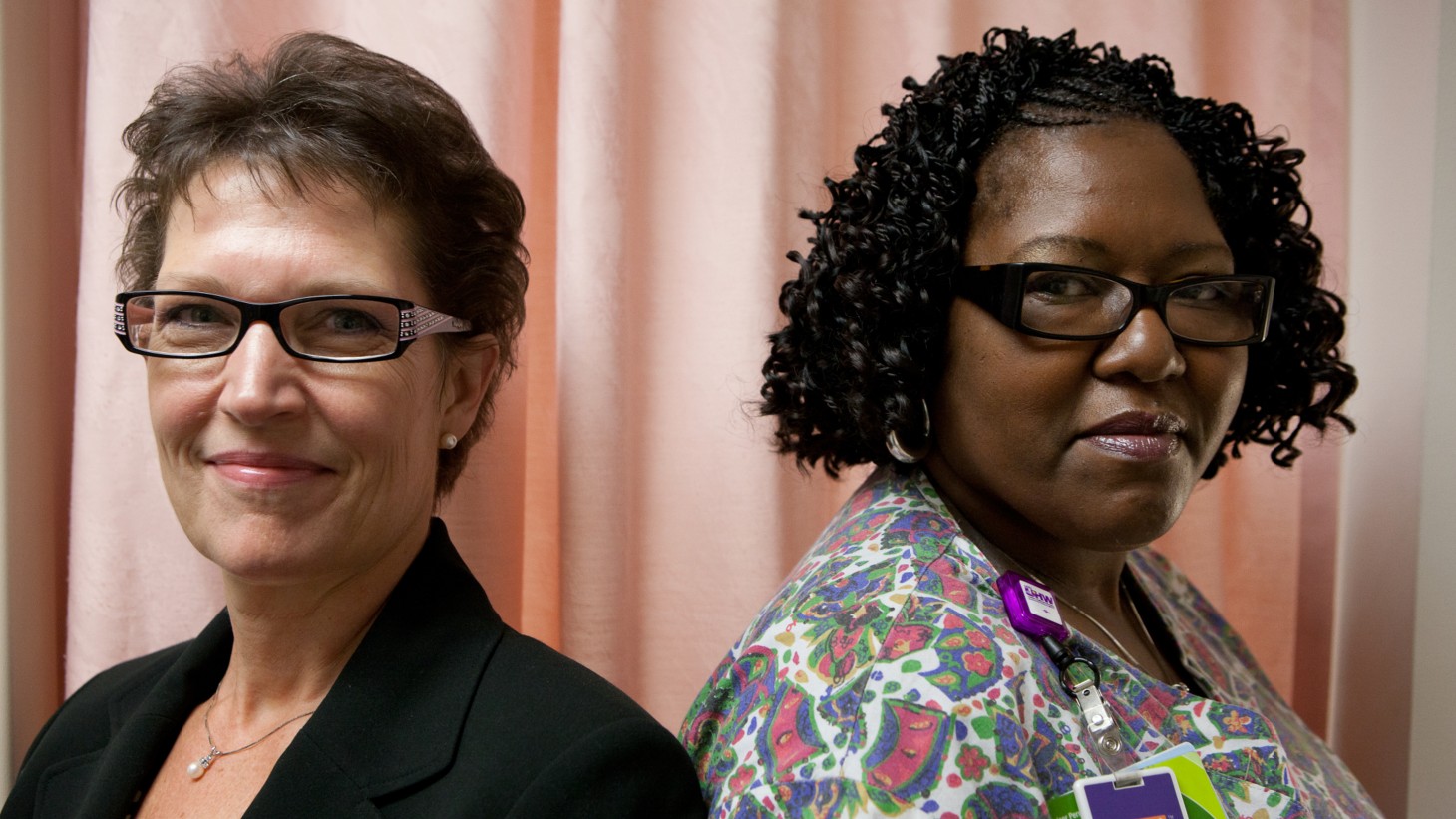
San Jose Ob/Gyn co-leads Kathleen Kearney, manager, and Glenda Morrison, receptionist and SEIU UHW shop steward.
Team helps provide culturally competent care by speaking Spanish from reception to examination
Imagine developing a severe cough and teeth-chattering chills. You want to be seen by a doctor but no one really understands you: Not the call center operator with whom you try to make an appointment; not the receptionist who checks you in; not the medical assistant who takes your temperature and blood pressure. Not even the doctor who speaks quickly and uses complicated medical terms.
“When you come in for medical care, it’s already like a foreign land,” says Kathleen Kearney, the manager and the UBT co-lead for the Obstetrics and Gynecology department at San Jose Medical Center. “If you don’t speak English, it can be downright frightening.”
Giving patients better access
Kaiser Permanente has long been committed to providing language access in the form of interpretive services for its non-English speaking members. The Ob/Gyn unit-based team in San Jose has taken the additional step of creating a Spanish-speaking module, a sort of one-stop shop for Spanish-speaking patients.
The idea for the module came from Joseph Derrough, MD, who recognized that good patient care involves more than just the patient and the physician in the exam room. It includes each interaction, from making an appointment to checking in and being assigned a room.
“I realized that we had a significant percentage of patients who only spoke Spanish, and we could do better service to them by providing linguistic and culturally competent care,” Dr. Derrough says. “We had staff that spoke Spanish, but they weren’t all in the same place. My vision was that we could create a clinic module where, from registration to examination, the patient was spoken to in her own language.”
Making it happen
The unit-based team made it happen.
“From the time they walk in the door, every patient should receive the same level of care regardless of the language they speak,” says Glenda Morrison, a medical assistant, SEIU UHW chief shop steward and the UBT co-lead.
But in the beginning, the frontline staff members, including Morrison, were skeptical.
“Since we were already serving Spanish-speaking patients in our clinic, the question we were asking was, ‘Why is this needed?’ ” Morrison says.
But a visit to the Spanish-speaking Medicine module at the Santa Clara campus made them believers. That module has been in place for five years.
“When I saw it in action, a light went off—and I realized that by not speaking to our Spanish-speaking members in their own language, we weren’t providing them with the same care as we were our English-speaking members,” Morrison says.
Overcoming obstacles
Once the team decided to take on the project, it faced some challenges. Offices had to be moved and medical assistants had to be reassigned.
“We had a lot of meetings and a lot of nervous people,” Morrison says.
But again, the Santa Clara example eased fears: “Once they saw how it worked in Santa Clara, we got by-in from the staff and it was easier,” Kearney says.
The module, which opened Sept. 29, includes signage and literature in Spanish. The staff members, from the receptionists and medical assistants to the doctors, are fluent Spanish speakers. Word about the new module went out through Spanish-speaking television news and newspaper reports. And there was a grand opening.
It’s going well so far, Kearny says, noting that “we have three Spanish-speaking providers each day, and they have appointment capacity for about 20 patients.”
Next steps
Now, the team is looking for ways to quantify the benefits of the new module. It’s hoping to be able to collect patient satisfaction data specifically from Spanish-speaking members to assess the impact, Kearney says.
“If it shows success, we’ll pass the idea on to other teams,” she says.
Meanwhile, the unit is looking at how it can provide culturally competent care for its other monolingual patients.
“We don’t what a certain group to feel singled out,” Morrison says. “We just want them to feel comfortable.”
